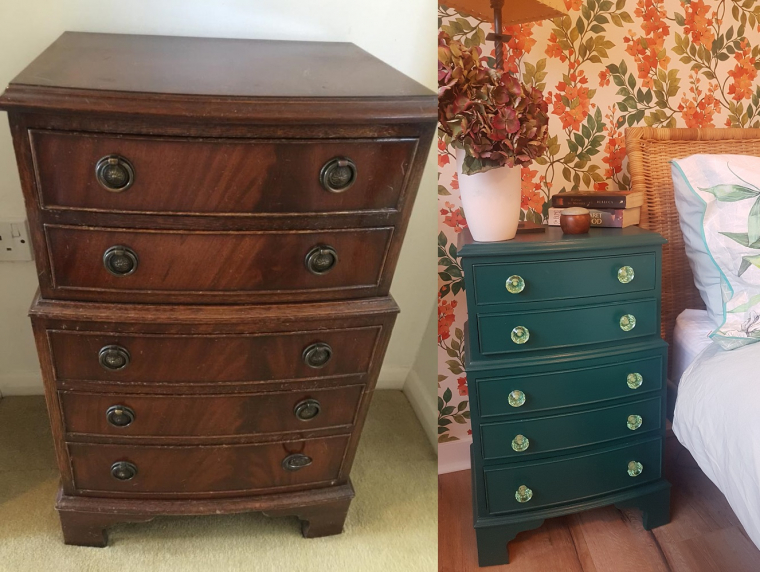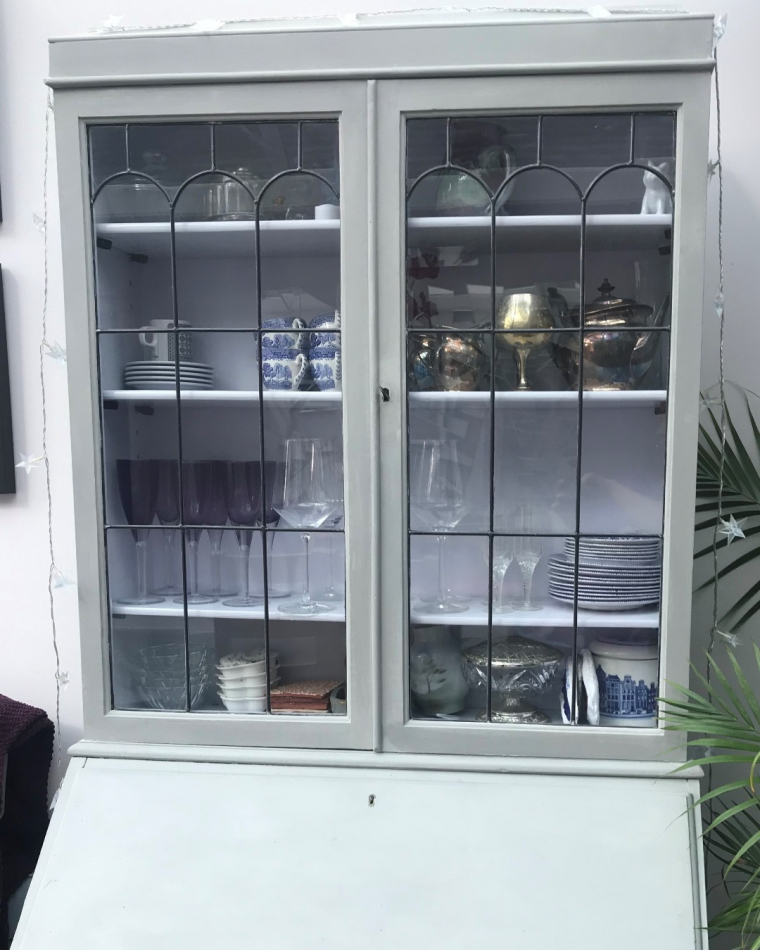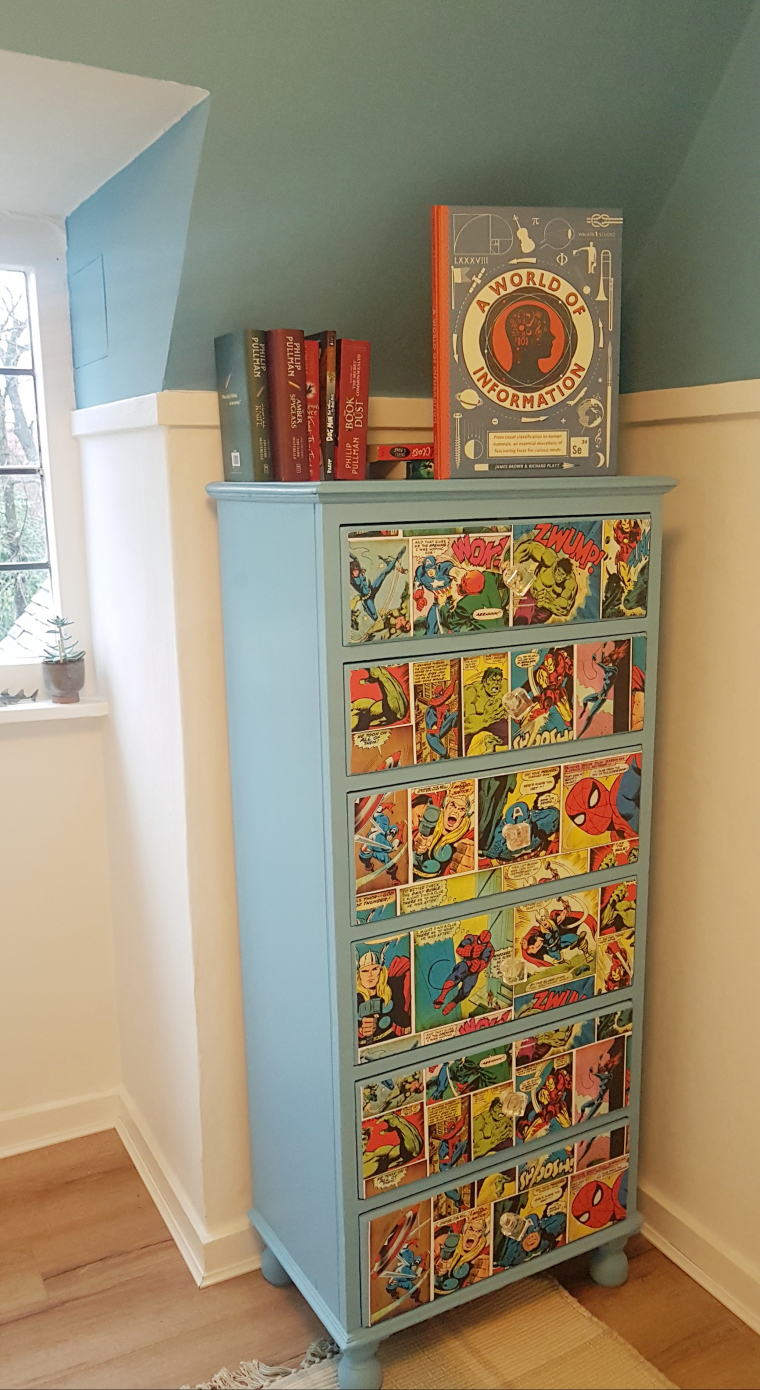Upcycling can create beautiful, unique pieces of furniture. It's also a wonderful way to keep an item of furniture in use. A small, simple change can make a huge difference; check out our list of simple starters:
1. New handles
DIY shops sell handles, or you will find lots online. If the handles are screwed on in two places, just make sure you measure the distance between the two screws so that your new handles are the same size. You don't have to exact same size - you can get a different size, but bear in mind you'll need to fill in the old holes and drill new ones. There are lots of guides online or on YouTube to help you with this.
You can find some really interesting second-hand handles on marketplaces like ebay - and don't forget to sell your own unwanted handles online when you've removed them.

The image above shows an NLWA colleague's upcycling efforts on a bedside cabinet. New handles were used to give the furniture a more modern look.
2. Lick of paint
If you have furniture that's made from wood, you can give it a whole new look with a bit of paint. It's also possible to get second-hand paint at various locations across London. Visit the Community Repaint website to find a collection point near you.
We recommend you find a good online tutorial to help you paint furniture, but here is an overview of the three steps involved:
- If the furniture has some kind of varnish on it (most furniture does), you will need to sand it first. You might find it's easier to use an electric sander. Make sure to clean off all the dust when you've finished.
- Before painting the furniture, you need to "prime" it. That means painting it first with some specialist wood primer paint. This will help your chosen paint to stick to the furniture properly.
- Paint your furniture! You'll get the best result if you use a small roller, and you'll need to do two or three coats, depending on the thickness of your paint.
If you don't fancy painting some furniture yourself, remember that you can always get someone else to do it. Get a few quotes from a decorator or professional upcycler. This is an especially good idea if you want to upcycle something big, or tricky, like all your kitchen cabinets.

The image above shows a dresser that an NLWA colleague upcycled by painting it.
3. Decoupage
Decoupage is the technique of sticking paper or fabric onto furniture. You can cover an entire surface, or cut out individual shapes or images. You can essentially glue your paper onto the furniture, and then, once dried, it just needs to be varnished. There are lots of online tutorials to guide you.

This image shows how an NLWA colleague used wall paper to upcycle a chest of drawers.
Tool borrowing and hire
If you don't have tools, check out Streetbank where people offer tools for their neighbours to borrow. You could also hire tools, sometimes very cheaply – you’ll need to search for companies near to you. Or Library of Things allow you to borrow all sorts of useful objects.
Looking for inspiration, or learning a new skill
Search online for upcycling ideas; Instagram or Pinterest have lots of inspiring ideas from fellow upcyclers. You could also consider learning more advanced upcycling techniques such as upholstery or woodwork skills. The Good Life Centre and The School of Stuff run a range of courses.
 Change to EcoPark RRC opening hours on Sunday 27 April
Change to EcoPark RRC opening hours on Sunday 27 April
